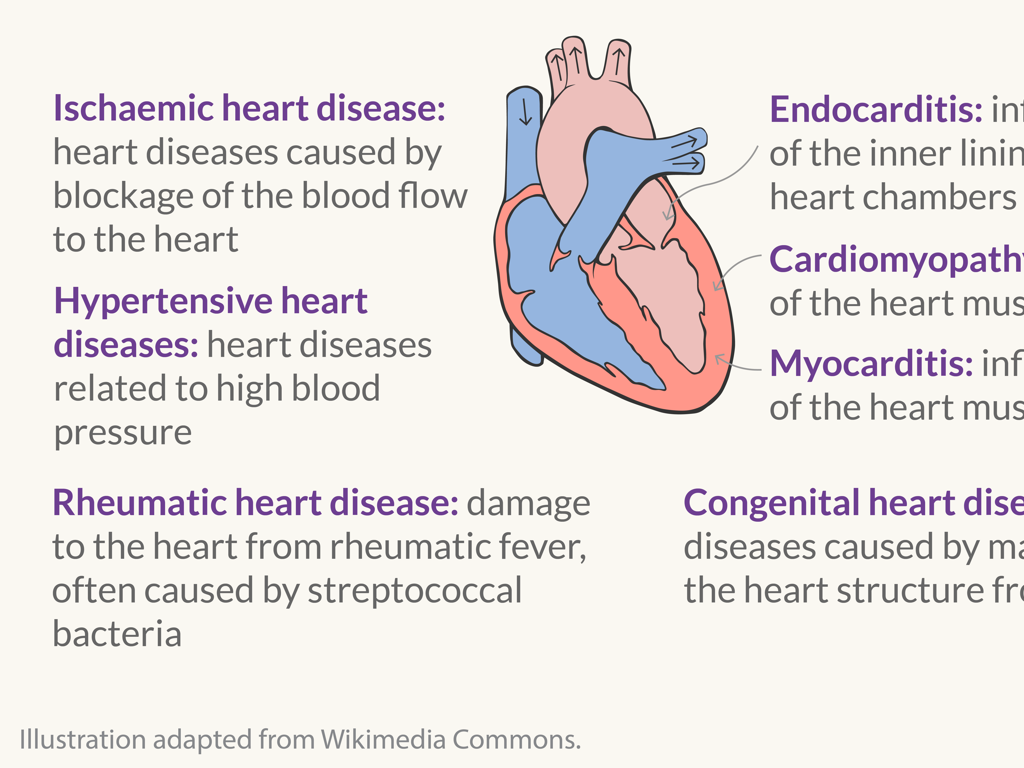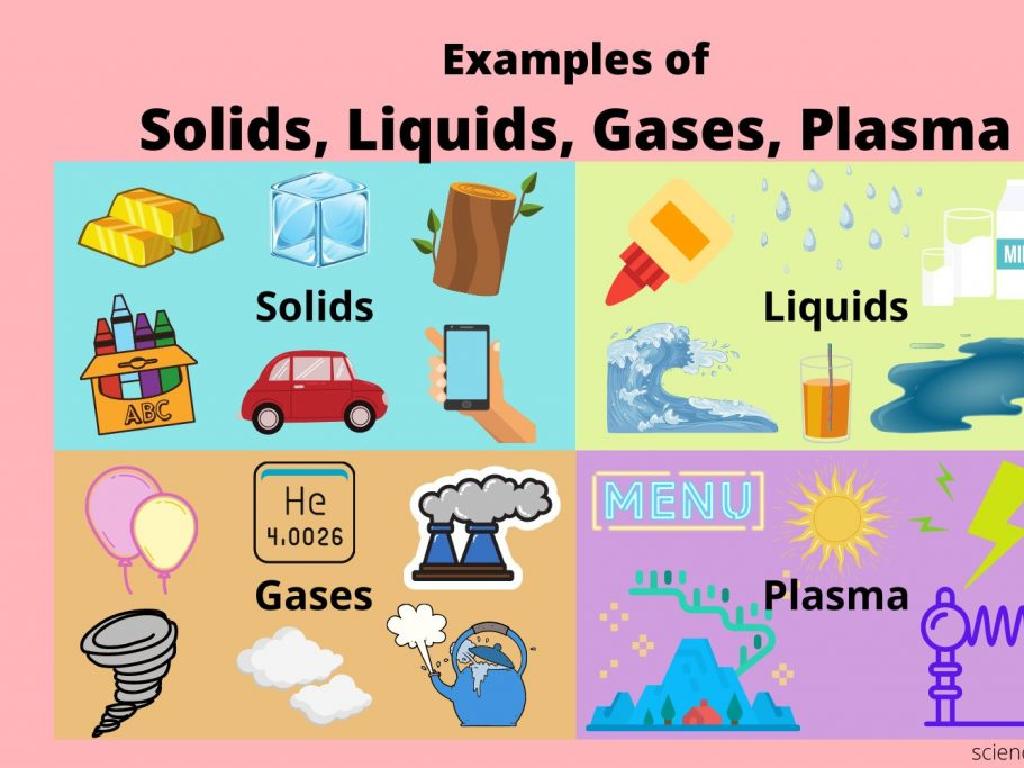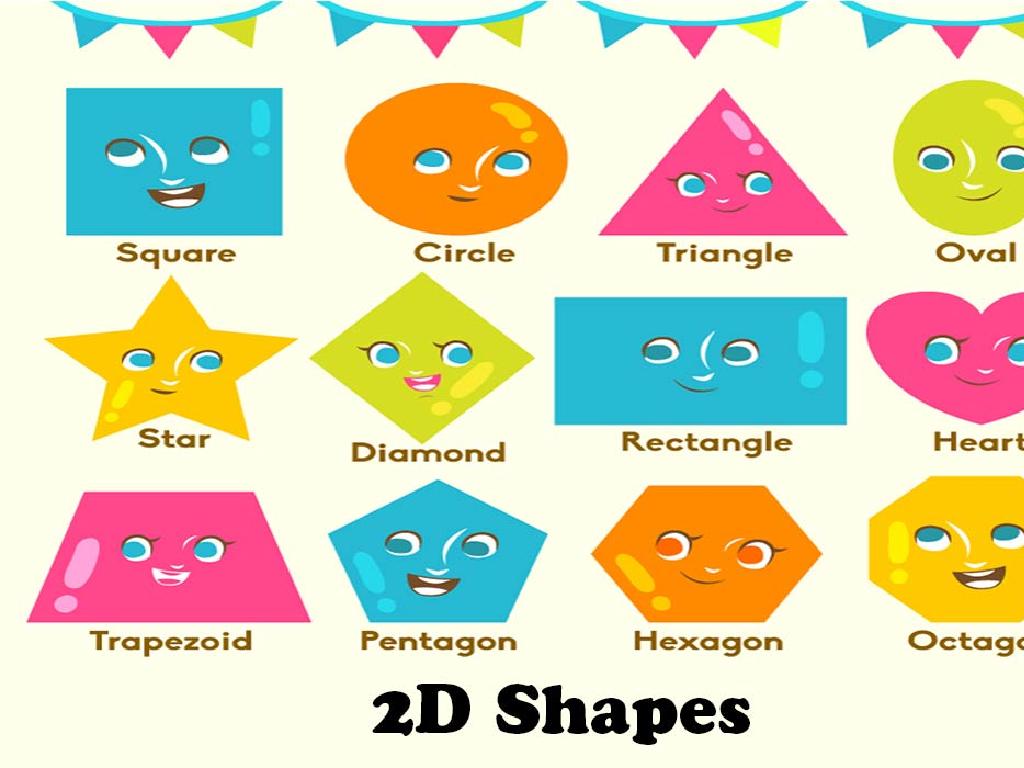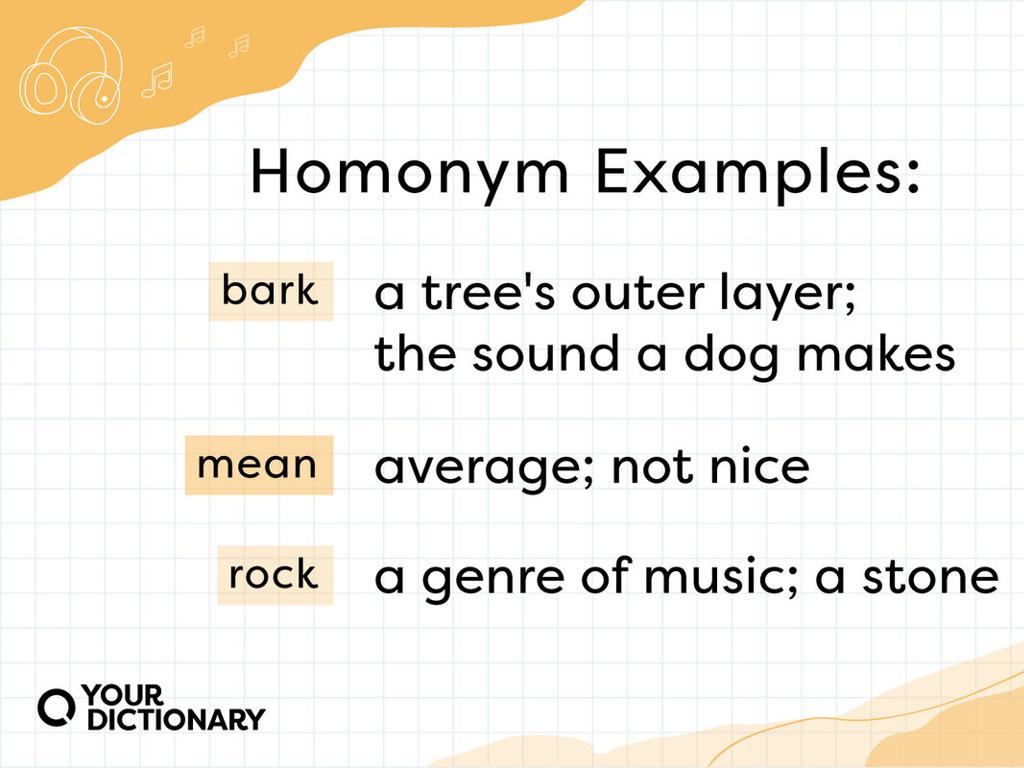Read And Construct Flowering Plant Life Cycle Diagrams
Subject: Science
Grade: Second grade
Topic: Plants
Please LOG IN to download the presentation. Access is available to registered users only.
View More Content
The Life Cycle of Flowering Plants
– Discover plant growth & reproduction
– Importance of flowering plants
– They provide food and help the environment
– Stages of the plant life cycle
– From seed to flowering, learn each part
– Flowers’ role in the environment
– Flowers attract bees for pollination
|
This slide introduces the concept of the life cycle of flowering plants. Begin by explaining that just like animals, plants go through a life cycle where they are born, grow, reproduce, and eventually die. Emphasize the importance of flowering plants in providing food for humans and animals, and their role in the ecosystem, such as pollination. Discuss the stages of the life cycle: seed, germination, growth, flowering, pollination, and seed dispersal. Highlight the role of flowers in attracting pollinators like bees, which is crucial for the reproduction of many plants. Use simple language and relatable examples to make the content accessible for second graders. Encourage students to think about the plants and flowers they see around them and how they might fit into this life cycle.
The Life Cycle of Flowering Plants
– What is a life cycle?
– A journey from birth to making new life
– Every plant has a life cycle
– Stages of a plant’s life
– From seed to a mature flowering plant
– Flowering plants’ life cycle
– We’ll learn each step a flower takes!
|
This slide introduces the concept of a life cycle, emphasizing that all living things, including plants, go through a series of stages from birth to reproduction. Explain that a life cycle can be thought of as a circle, where the end of one life leads to the beginning of another. For flowering plants, the life cycle includes stages such as seed, germination, growth, flowering, pollination, seed formation, and dispersal. Use simple language to describe each stage and relate it to familiar flowers they may see in their environment. Encourage students to think about how a single seed can grow into a beautiful flower that eventually creates more seeds, continuing the cycle of life.
Stages of a Flowering Plant Life Cycle
– Seed Stage: A plant’s life starts
– A seed contains a tiny plant inside.
– Germination Stage: Seed sprouts
– With water and warmth, a seedling emerges.
– Growth Stage: Leaves and roots grow
– The plant gets taller and stronger.
– Flowering Stage: Flowers appear
– Colorful flowers are produced to attract pollinators.
|
This slide introduces the basic stages of a flowering plant’s life cycle, tailored for second graders. Begin with the seed stage, explaining that every seed holds a small plant waiting for the right conditions to grow. During germination, discuss the importance of water, air, and the right temperature for a seed to sprout. In the growth stage, focus on how the plant develops its main parts like leaves and roots, which are essential for photosynthesis and obtaining nutrients. The flowering stage is where the plant’s reproductive process begins, and it’s a good opportunity to explain the role of flowers in attracting pollinators. Although pollination and seed formation are part of the cycle, they are not included in the content bullets due to the age group and slide content limitations, but can be discussed in class. Encourage students to observe plants around them and relate these stages to real-life examples.
Seed Stage: Beginning of Plant Life
– Seeds: tiny plant ‘packages’
– Think of a seed as a baby plant in a little box, waiting to grow.
– Needs: soil, water, sunlight
– Just like you need food and water, seeds need the right environment to sprout.
– Growth: from seed to sprout
– When a seed gets all it needs, it opens and a small sprout comes out!
– Recall: seeds you’ve seen
– Have you seen apple seeds or sunflower seeds? Those can grow into new plants!
|
This slide introduces the concept of seeds as the starting point of a plant’s life cycle. Explain to students that seeds are small but hold everything needed for a new plant to grow. Discuss the requirements for a seed to start growing: proper soil, water, and sunlight. Engage the class by asking them to think of and share examples of seeds they have encountered in their daily lives, such as seeds from fruits they eat like apples or oranges, or seeds they see in the garden like sunflower or pumpkin seeds. This will help them connect the concept of seeds to real-life observations and experiences.
The Germination Stage of Plant Life
– Germination: seed to young plant
– It’s the start of life for a plant from a seed.
– Seed coat breaks, root grows down
– The first root, called a radicle, emerges.
– Shoot grows up towards light
– The shoot seeks sunlight to start photosynthesis.
|
This slide introduces the concept of germination, the first stage in the life cycle of a flowering plant. Explain that germination is like the ‘birth’ of a plant, where it begins its journey from a seed to a mature plant. Show a diagram or a real example of a seed with a broken coat, a growing root, and an upward shoot. Emphasize the importance of water, warmth, and air for this process. Encourage students to think about how a plant knows which way is up and down. Discuss how roots always grow down while shoots grow up, seeking light to start making food for the plant through photosynthesis. This will set the foundation for understanding the entire life cycle of flowering plants.
Growth Stage of Flowering Plants
– Young plant growth
The plant gets bigger and stronger.
– Development of more leaves
Leaves make food for the plant using sunlight.
– Roots grow deeper
Roots reach for water and nutrients in the soil.
– Importance of leaves and roots
Leaves and roots are vital for the plant’s survival and growth.
|
This slide focuses on the growth stage of a flowering plant’s life cycle. During this phase, the young plant matures by increasing in size and strength. It’s crucial for students to understand that the development of more leaves is significant because leaves are responsible for photosynthesis, the process by which plants make their own food using sunlight. Additionally, the roots grow deeper into the soil, which allows the plant to access more water and essential nutrients. Explain that both leaves and roots are critical for the plant’s health and growth. Encourage students to think about how plants in their own environment grow and change over time.
The Flowering Stage of Plant Life
– Plants mature and grow flowers
– Flowers vary in color and form
– Examples: Roses are red, violets are blue
– Flowers are seed-making parts
– Seeds develop from flowers after pollination
– Understanding flower functions
|
This slide introduces the flowering stage of a plant’s life cycle, which is a sign of maturity in flowering plants. Students should understand that flowers are not just for beauty; they serve a crucial role in the reproduction of the plant. Flowers come in many colors, shapes, and sizes, which can attract different pollinators. The main function of a flower is to produce seeds, which happens after pollination. Discuss the process of pollination briefly and how it leads to seed formation. Encourage students to observe flowers in their environment or bring in some flowers to class to explore their variety and discuss their role in the life cycle of plants.
Pollination and Seed Formation
– What is pollination?
– Moving pollen from one flower to another
– Helpers in pollination
– Bees, butterflies help flowers
– Pollination leads to seeds
– New seeds grow after flowers are pollinated
– Importance of pollination
|
This slide introduces the concept of pollination and its role in the life cycle of flowering plants. Explain that pollination is like a flower getting a little help from its friends, like bees and butterflies, to make new seeds. These seeds will eventually grow into new plants. Emphasize the importance of pollinators in the environment and how they assist in creating new life. You can plan an activity where students mimic pollination with cotton swabs and powdered sugar to understand the process better. Discuss the mutual relationship between insects and plants, highlighting how they help each other survive.
Life Cycle Review: From Pollination to Growth
– Review plant life cycle stages
– Discuss post-pollination changes
– After pollination, seeds develop in the ovary of a flower.
– Identify stage after seed formation
– After a seed, it germinates to become a seedling.
– Engage with the life cycle
– Let’s draw the cycle and label each part.
|
This slide aims to recap the stages of a flowering plant’s life cycle. Start by asking the students to recall the different stages discussed in the lesson. Then, prompt them to think about what happens after pollination, guiding them to understand that seeds are formed within the flower. Next, ask them to identify the stage that follows seed formation, which is germination leading to a seedling. Encourage active participation by having students draw the life cycle and label each stage. This interactive review will help solidify their understanding of the plant life cycle. Prepare to provide examples or further clarification if students are unsure about the stages.
Class Activity: Plant Life Cycle Diagram
– Draw the life cycle of a flowering plant
– Label each life cycle stage
– Seed, Germination, Growth, Flowering, Pollination, Seedling
– Illustrate changes in each stage
– Show seed sprouting, plant growing, flowers blooming, seeds forming
– Share your diagram with the class
|
This activity is designed to reinforce the students’ understanding of the flowering plant life cycle. Provide each student with a worksheet that outlines the stages of the life cycle with space for their illustrations and labels. Encourage creativity but also accuracy in their drawings. Possible activities include: 1) Pairing students to discuss each stage before drawing, 2) Using real plant samples for inspiration, 3) Creating a classroom display with their completed diagrams, 4) Having a ‘gallery walk’ where students observe and discuss each other’s work, 5) Incorporating a storytelling element where they describe the life cycle from the perspective of the plant. This will help cater to different learning styles and keep the activity engaging.






